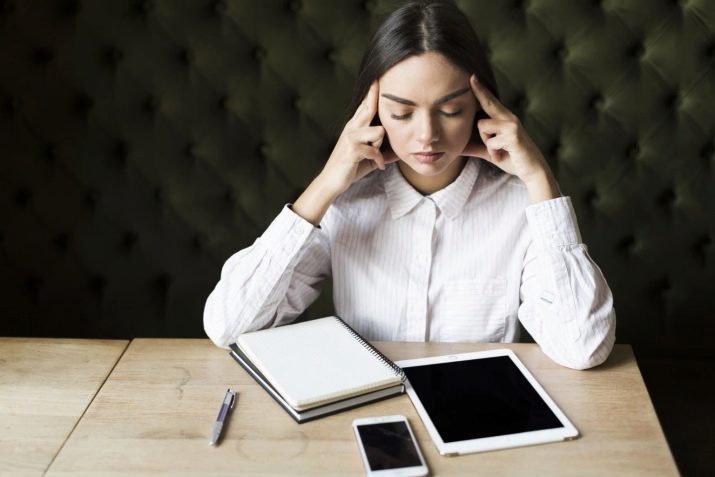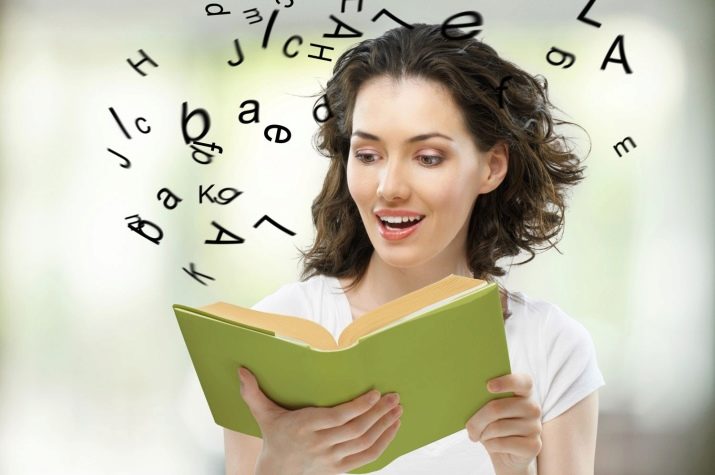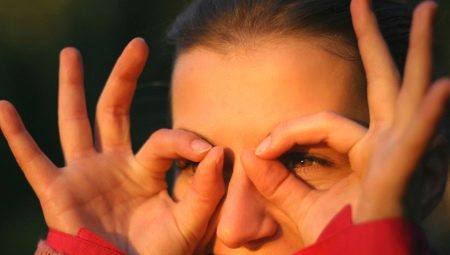A good memory is a great advantage of any person. And if the individual at birth is also endowed with photographic memory, then he automatically goes into the category of unique. Yes, not everyone is so lucky. However, it is not for nothing that people say: “Patience and labor will grind everything.” If you really want to have a photographic memory and are ready for this to learn, then go for it!
Remember that photographic memory can be developed and developed. How long will it take? It all depends on your abilities. Therefore, do not waste precious time.
Basic techniques
They can be performed anywhere and anytime, there would be a desire.
Observation
This method will quickly help the development of memory. Only need daily practice. To do this, take any item. It is better if it will have a very bright surface and various bends. Examine it carefully for 2 minutes. Pay attention to the shape and color.
Then close your eyes and imagine the same object, only in your mind. Take your time and examine it in detail in your memory. Open your eyes and compare your picture with the original. If there are some discrepancies, then the exercise should be repeated. Did it work the first or the second time? Take on the next object, which should be more complex.
Continue to follow the previously described methodology. If you are endowed with some abilities, then you will not experience difficulties.

Most people have eidetic memory, if present, in very small numbers. Therefore, it needs to be developed. To do this, try to work out according to the following procedure.
You will need a piece of paper and about 5 small items. Act like that.Throw objects involuntarily so that they are distributed throughout the sheet. The next step will be a careful study of the location of objects, their shapes and colors. This lesson should take 3 minutes.
Then close your eyes and imagine a white sheet and things lying on it. Open your eyes and compare your imaginary picture with a real picture. If the matches are very small (and in most cases it happens), then you should continue the lesson. Such manipulations must be done until you fully remember the picture.
You can also do with a text image. To do this, take a book and select a small paragraph. The room where you arranged the lesson should be quiet. You carefully peer into the text and as if photograph in your memory. Then close your eyes for 1-2 seconds and open them again. At this time, your focus should be on the text.
These steps must be repeated several times. So in your eyes will remain an imprint. It will be displayed 100%.

Item review
The development of eidetics can be facilitated by the examination of objects. If you walk along the alley, then you will keep your eyes fixed, for example, on a bench. Carefully inspect this item, and then close your eyes and try to remember what you saw in full detail.
You can train your memory even better if you describe the thing you saw to yourself, that is, mentally. To the visual perception of the subject, a description will also be added. As soon as you feel that you remember all the details of what you saw, close your eyes and try to imagine and describe the subject. Such actions will lead to greater effectiveness in terms of memorization.
Street workout
This does not require special training. You do not even spend precious time, as the lesson will be performed while moving from place to place.
This technique is quite similar to the technique of examining objects. On the street there are a lot of things that can be used as an object for memorizing. One of the many houses will be the best object for exercise. So, first we carefully study the building, and then close our eyes and try to capture it in memory. Open your eyes and compare the picture. Little coincidence? Then repeat the exercise.
If you have patience and you believe in yourself, then soon you will like such actions. This hobby will turn into a fun game. And then you only need to complicate the task. When your memory reaches a certain level, then begin to remember panoramic views.
A method called a “walk around the house” is considered very effective. The rules of this lesson: while you are at home, carefully study the objects that meet on the way. Do not forget about their location. When you leave the house, then try to reproduce the picture of the internal location of the premises in your house and remember the location of household items.

The first time you may not succeed. Continue to workout hard. Soon, everything will fall into place.
Associations
This technique is the main and is considered to be an integral part of almost all methods of memorization. The word "association" means any connection with something.
To better understand this method, you need to consider an example. Take the image of Santa Claus. It is always associated with winter, with warm clothes and delicious gifts. Such associations arise when you activate an object or phenomenon (in our case, Santa Claus). So the main thing entails the appearance of another object or phenomenon.
To learn how to create associations, you need to work hard. Creating linking images is a skill. And before you learn this skill, you need to familiarize yourself with the rules.
Primarily, all associations must be very non-standard and unusual. Remember that a person is more likely to remember an object whose image is bright or sonorous. For example, if you want to connect the words “cat” and “chocolate”, then you need to draw some kind of “tasty” parallel (you can draw a not “tasty” parallel, but be sure to be bright and memorable). The combination of "chocolate cat" will cause a very positive review in your mind. When you need to remember these two words, then in your memory the image of delicious chocolate in the shape of a cat will very easily arise.
Do not invent too many associations in one day. Out of habit you can get confused in them.

Text experiments
When you need to remember a large text volume, you panic. Should not be doing that. Remember that each person is individual. Perhaps you can find for yourself the best version of the exercises, which will help to remember voluminous texts.
Use reading aloud. When a person reads to himself, only the visual organs work. If you connect hearing and speech to reading, the effect will triple.
So, as a result of reading out loud, you immediately connect to the process of memorizing processes such as reading, speaking, listening to information. Creative people have well-developed imaginative thinking. And if such a person will perform all actions at the same time, then the chances of memorization will increase significantly. Reading aloud also allows you not to be distracted by extraneous sounds and thoughts.
Small texts are read quickly, but are poorly memorized. It is especially difficult to immediately grasp their individual fragments. Therefore, try to highlight problematic paragraphs, but rather write them in your own words on a piece of paper. Go back to reading them again and again.

If in the process of reading you have associations, then this is very good. In most cases, it is they who help to remember the entire text. To reproduce the material, it is enough to recall the association that arose when reading a forgotten word. Maybe this is the option you need.
And still it is necessary to tell about separate words. The text often contains words that are incomprehensible in meaning. Do not ignore and skip them. It’s better to see the meaning in the dictionary. So you will definitely understand the meaning of the text read and learn the material.
And remember that the semantic meaning of the text is directly related to excellent memorization. Therefore, first understand the meaning of the material read, and only then try to remember it.
You can also try to split the text into parts. And if there is enough time to memorize the material, then you can study each part separately for several days.
Other individuals can try to use reiteration. No wonder they say that repetition is the mother of learning. Perhaps it is by repeating the text that you can remember it for a long time, and maybe forever.

Paired images
Everything is quite simple here. Buy a children's magazine or download a game called “Paired Pictures” or “Find 20 Differences”. In the first case, the essence of the game is to search for identical pictures that are specially turned upside down. Pictures need to be flipped back and paired. This is not easy to do, as they are lost among many other images. When such pictures are found, they are deleted.
The essence of the game "Find Differences" is as follows. Before you are two identical paintings. Such they seem at first glance. Upon careful consideration, there will certainly be differences. They need to be identified and counted.
A dark room
The technique is as follows. We set a lamp in front of us and take a book. Open any page and select a small paragraph for reading. We look carefully at the text and read.
After reading, we fix the look on the read lines. We quickly turn off the light. We are waiting for the eyes to get used to the darkness and turn on the light again. So there is an involuntary photographing of the text in the human memory.

Aivazovsky method
The most popular technique to develop or improve photographic memory. This technique can be learned. Aivazovsky, if he wished, could stop in his mind the movement of the sea seen in reality, and then reproduce the picture he saw at any time convenient for him.
The technique is as follows:
- look at the object for about 6 minutes;
- closing your eyes, restore the image in consciousness;
- try transferring this image to a piece of paper.
Additional exercises
Some techniques also allow you to train your memory, and for this you do not need to have special skills. Consider them.
- Throw 6 matches on the table and remember their location. Turn away and draw the same pattern on another table using the following batch of matches. Then compare the pictures.
- When you go to work or to the store, Try to count all the objects that you meet on the way. Count houses and even trees. Remember the number. When you go back, then count the objects again. The numbers must match.
- If you live in a big city, then move home from work different routes.
At the same time, carefully consider the objects that you encounter along the way.

Recommendations
When training, it is important to consider some recommendations.
- Repeat aloud the information you want to remember.
- Do not be lazy to remember unnecessary information, such as dates, names, car numbers, phone numbers, etc.
- Use a variety of techniques if you need to learn any amount of knowledge. For this, schemes, drawings, etc. are suitable.
- In the new material, look for interesting facts.
- Learn more about information you’ve never seen before.
- If you are studying a new topic, then comprehend even the little things. Connect them with your experiences and with already known facts.
- Try to read the text several times before going to bed, and in the morning repeat the material.
- Remember the faces of strangers and try not to miss the details.












